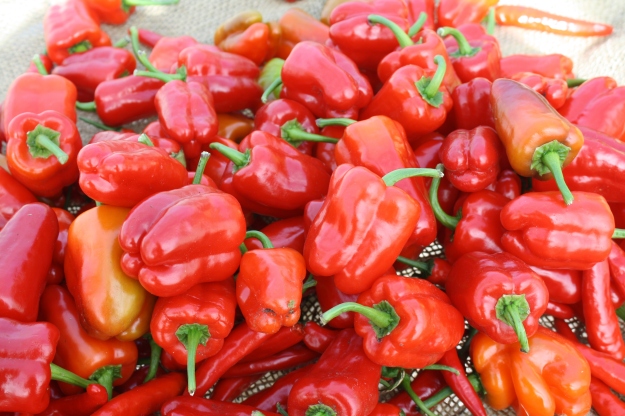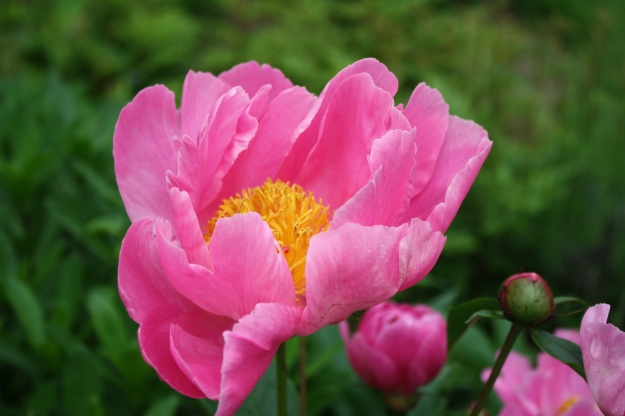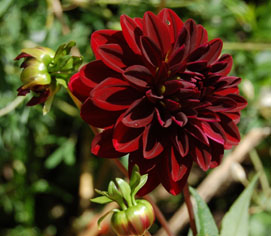“Fall is the best time to plant” That’s what I tell my students (and anyone who asks). The shorter days and cooler temperatures make it easier for transplants to spread their roots without us hovering nearby with the sprinkler. Usually there’s some rain too, though not this fall, not much. But the dry weather is not nearly the problem it would be in the spring and so we are madly digging and dividing perennials all over the garden.
Why divide? After a few years — as few as 3 or as many as 10 — perennial plants begin to lose vigor. Often they grow toward the outside, leaving an empty space in the middle like a bird’s nest. They may flower less, have smaller leaves, or flop over more. They may also have gotten too big for their space in the garden. Dividing re-invigorates the plants, and as Tracy Aust says, “It can be very satisfying, having a rejuvenating effect on perennial and gardener alike.”
Of course, after digging and dividing and transplanting, you may have more plants than you can use. I overwinter many garden-dug perennials for our spring plant sale, but space is at a premium this year. A truckload of perennials has been donated to two local schools, saving me from having to compost them. Thanks Jayne and Hilary, for gardening with the kids!
One last thought about digging and dividing: the plants may not look great at first but in the spring they’ll look better than ever.
 The Hosta bed under the Metasequoia was dug up and replanted.
The Hosta bed under the Metasequoia was dug up and replanted.
 Over near the Co-operative Extension parking lot we put in new plants to go with these great Chrysanthemums that look like pink daisies.
Over near the Co-operative Extension parking lot we put in new plants to go with these great Chrysanthemums that look like pink daisies.
 Lauren and I dug, divided, and replanted Bee Balm in the ericacious garden and the sunny border. We also took some Siberian Iris out of a bed that was too shady and put in Ligularia, which I think will do well in this moist, shady spot.
Lauren and I dug, divided, and replanted Bee Balm in the ericacious garden and the sunny border. We also took some Siberian Iris out of a bed that was too shady and put in Ligularia, which I think will do well in this moist, shady spot.
 Adam and Ben got started digging up the monster Joe-Pyes in the back of the sunny border. Topping out at 10-12 feet this year, their root balls are two feet across. They are going to be moved back so the rest of the plants can breathe.
Adam and Ben got started digging up the monster Joe-Pyes in the back of the sunny border. Topping out at 10-12 feet this year, their root balls are two feet across. They are going to be moved back so the rest of the plants can breathe.
 Still no frost here, so flowers continue to bloom, especially dahlias, which seem to get bigger and more colorful every day.
Still no frost here, so flowers continue to bloom, especially dahlias, which seem to get bigger and more colorful every day.
































